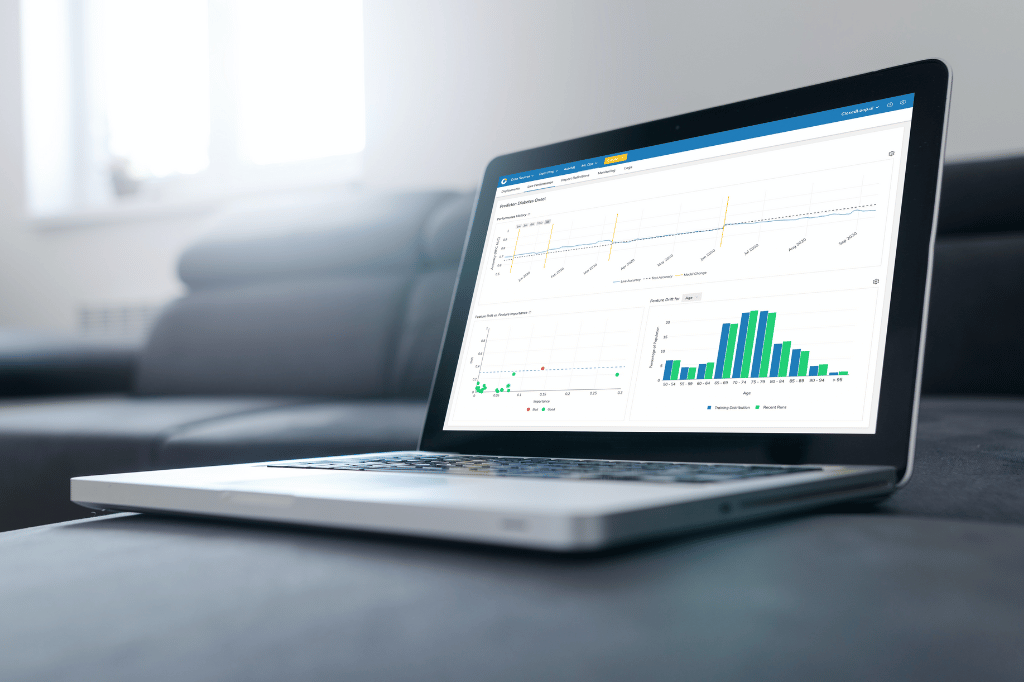This article originally appeared on MedCityNews
Remote patient monitoring (RPM) is quickly establishing itself as one of the most effective tools for chronic disease management. RPM is the collection and transmission of patient health data to providers via connected devices outside of a conventional care setting. These monitoring devices record vital information, such as blood pressure, heart rate, or oxygen levels, and are especially helpful for easily tracking patient health without frequent visits and examinations. But before the pandemic, widespread RPM adoption was hindered by the relatively few reimbursement incentives available and saw limited use despite its immense potential. That all changed in the blink of an eye.
COVID-19 necessitated a complete paradigm shift in the delivery of care and dramatically accelerated the implementation of remote technology solutions. Throughout the pandemic, healthcare resources were under far greater strain than ever before, and non-essential appointments were deferred or conducted via telehealth to reduce the burden on providers, lower the risk for more vulnerable patients, and slow the spread. As a result, more healthcare organizations (HCOs) adopted RPM to enable chronic disease management in the absence of in-person encounters. CMS responded accordingly and announced sweeping regulatory changes, which included expanded reimbursement for telehealth and RPM. While these interim reimbursements have since been revised, far greater support for RPM will remain post-pandemic and continue to grow.
RPM Will Become the Norm
The potential for RPM to improve chronic care is clear and its adoption will undoubtedly continue to increase. Providers expect RPM use to match or surpass in-patient monitoring within the next five years, and stakeholders expect the market to double over the same period. Moreover, telehealth continues to grow, and the data RPM provides on vital signs and other clinically relevant information is a critical component of virtual appointments. While the viability of remote care was somewhat dubious before the pandemic, it’s now a proven commodity and well on its way to becoming ubiquitous.
Forward-thinking patients now expect to have access to convenient virtual care options and HCOs that haven’t yet adapted long-term to this shift in preferences are likely to see this change reflected in their bottom line. This will be especially true for patients with chronic conditions that require frequent checkups. While these patients might have previously been content with the ability to simply connect with any physician or discipline-specific specialist, the proliferation of virtual care programs and RPM is raising the bar. As patients become increasingly comfortable with virtual care, they expect greater convenience and flexibility, increased control over virtual encounters, and the ability to selectively connect with their primary care provider and specific specialists of their choice. Rather than scheduling routine office visits, patients with chronic conditions will increasingly endeavor to connect more immediately through virtual care and seek experts that they feel provide the best disease management options digitally.
Simply implementing these virtual care programs no longer provides a competitive advantage. Now, they must also effectively leverage digital technologies to streamline engagement, provide personalized care, and ensure virtual care meets the same expectations patients have for in-person interactions. Patients are likely to explore other options if HCOs can’t meet these requirements, and doing so requires RPM. Virtual appointments don’t allow for many of the examinations that are essential for accurate diagnoses and treatments. Instead, the practitioners rely on remote monitoring to collect critical patient health data.
The need for RPM to facilitate effective virtual care programs is evident, but how HCOs should incorporate the myriad of novel data sources RPM includes to best improve care is much less clear. Answering this question is critical for chronic condition management, especially because RPM has the potential to significantly augment existing disease management practices and help address gaps in care. Ideally, RPM data can enable HCOs to proactively identify key patients for engagement, and the increase in available data can help to anticipate changes in behaviors and conditions. To this end, HCOs will need to ask, “How can RPM be harnessed to predict individual health outcomes?”
Data Collection Is Just the First Step
RPM is so much more than an essential complement to effective telehealth visits. It represents a tremendous, ongoing stream of novel data that has the potential to dramatically increase insight into patient health. In tandem with the right technology stack, it presents an opportunity for HCOs to revolutionize their approach to patient engagement, anticipating declines in health without face-to-face examinations and providing personalized care remotely.
Collecting the data is merely the first step, not the end goal. If RPM is to deliver value for HCOs and improve health outcomes, it must be paired with analytics capabilities that can integrate these novel data streams into clinical workflows, generate accurate predictions, and identify individual patients for outreach. HCOs will need to quickly ingest data from connected devices and leverage it to abstract high-level information about individual patients. To achieve this efficiently, they will need to exploit machine learning and artificial intelligence to channel a deluge of raw data into personalized predictions.
RPM and AI in Practice
The potential for RPM and AI extends far beyond just surfacing raw patient health data into physician-facing reports and interfaces; it enables proactive care and the ability to anticipate adverse events without consistent visits. For example, an older patient with COPD may have had their regular, in-person appointments disrupted by the pandemic and be reluctant to frequently connect with their primary care physician virtually. During this period, their self-management practices may worsen. Without the combination of RPM and AI, it would be exceedingly challenging for a care team to identify this patient’s increase in risk and accurately anticipate potential complications.
However, the synthesis of RPM and AI enables proactive identification and intervention. If the patient’s remote monitoring device detects a decline in blood oxygen saturation and this data source is integrated with predictive analytics, the care team can initiate preventive measures. AI can analyze this decline in combination with existing clinical data to predict that the patient is highly likely to experience an ER visit within the next three months due to exacerbation. This insight and the specific evidence that supports it are then surfaced to help prioritize this patient for engagement. As a result, the adverse outcome is prevented, significantly reducing costs and improving the patient’s long-term health.
The combination of remote monitoring and AI can also promote healthy behaviors without clinical intervention. Digital health solutions that ingest remote monitoring data can leverage AI to establish intelligent feedback loops and provide precise recommendations. These solutions can help individuals with chronic conditions gain greater insight into their health and improve their own self-management practices with personalized insights. For example, an AI-driven digital health app may identify the need for more regular exercise from an increase in blood pressure, but personalize its recommendation to improve engagement. It may encourage long walks with a dog rather than jogging if it has learned that the individual is more receptive to such a suggestion. Similarly, HCOs can synthesize RPM and AI to improve long-term disease management programs and determine which interventions and methods of engagement most effectively foster healthy behaviors.
Engaged and Personalized Care
The pandemic catalyzed greater implementation of RPM and definitively proved the viability of virtual care programs. Moving forward, HCOs will be able to amplify the success of these care management programs through proactive engagement. With RPM and AI-based models, HCOs can predict high-risk patients to promote earlier diagnosis of chronic conditions, mitigate disease progression, and anticipate adverse events. In conjunction with AI, RPM enables care teams to surface specific, modifiable risk factors from raw data and measure engagement effectiveness to support the best possible health and financial outcomes.
Effective RPM implementation will not only help to better allocate limited healthcare resources to the patients that will benefit most, it will also continue to support fundamental changes to care delivery. At its core, it presents an efficient approach for patients and their care teams to continuously share health data remotely and enable engagement outside of in-person interactions. At the other extreme, RPM offers the opportunity to rethink care delivery entirely and to replace existing paradigms with a better vision of patient engagement and the pursuit of health. Ultimately, they can enjoy an improved quality of life, knowing that their health data is being seamlessly transmitted and assessed to support proactive, personalized care.
Interested in learning more about remote patient monitoring and other rapidly growing healthcare technologies? Check out these related blog posts and other content:















